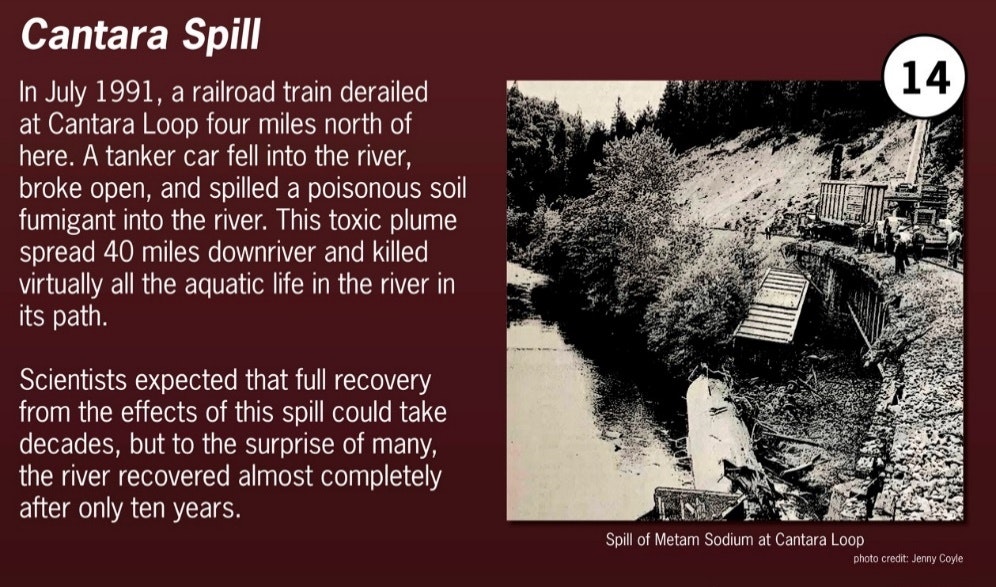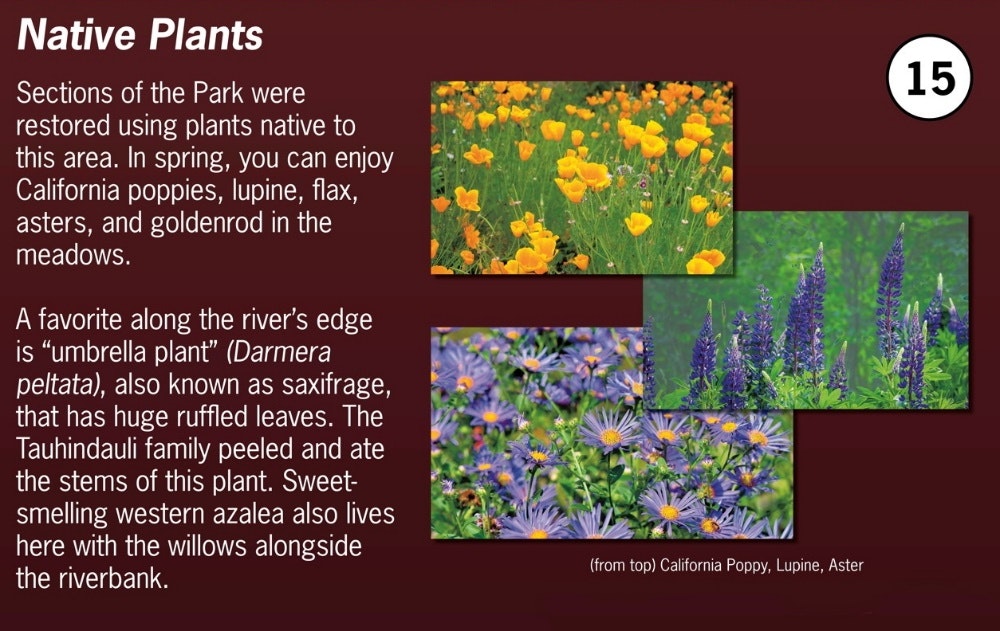Self-Guided Tour Sign #14 -- Cantara Spill

In July 1991, about four miles north of Tauhindauli Park, some railcars derailed and tumbled into the Sacramento River. Unfortunately, one of these railcars contained a highly poisonous chemical called metam sodium; the railcar broke open and the chemical spilled into the river. Known as the “Cantara Spill”, this chemical spill became international news as it spread downstream, killing all the aquatic life in the river for 40 miles—all the way to Lake Shasta. Through much hard work and careful management, the river recovered after only ten years. However, the effects on Dunsmuir and the area were devastating, as visitors and tourists were turned away, and health effects on local residents lingered. After some years of litigation, a settlement was reached and a trust fund was created to help repair the damage. Ironically, it is money from this Cantara Spill trust fund which purchased the land that is now Tauhindauli Park and is providing for maintenance of the Park.
For more detailed information, continue reading below.
One of the most important challenges in the 1880’s for the railroad builders in the Sacramento River Canyon was the very steep upgrade that was going to be needed beginning four miles north of the Park and just south of today’s Mount Shasta City. The steam engines of the 1880’s were limited in how steep an uphill climb they could pull their trains, and railroad surveyors were careful to look for paths through the mountains that provided the gentlest climbs.
The railroad could follow the more gradual climb of the Sacramento River for nearly all its length from San Francisco Bay through the Sacramento River Canyon south of the Park. However, beginning about four miles north of the Park, the river begins to climb too steeply, and the railroad would need to leave the river canyon to climb up to today’s Mount Shasta City. To handle this problem, the railroad built a very large “switch-back”—a number of sharp turns that zig-zagged up the hillside at what became known as “Cantara Loop”. One of these sharp turns crosses a bridge over the Sacramento.
Due to an effect known as “bow-lining”, when there is a sharp u-turn-type curve in a railroad track, there is a risk that railcars will come off the track. Unfortunately, that is exactly what happened at Cantara Loop—and even worse, in this July 1991 accident, one of those railcars contained the highly toxic chemical metam sodium. Used in commercial agriculture, it is what is known as a soil fumigant, is highly poisonous, and is designed to kill almost anything living that comes in contact with it. Fish, amphibians, reptiles, insects, birds, and small mammals all died in the millions between Cantara Loop and Lake Shasta, forty miles to the south. Residents of Dunsmuir and other downstream communities were sickened, and some suffered long-term effects from the fumes of the chemical.
Below are links of YouTube videos about the Cantara Spill and trains passing through Cantara Loop.
Watch trains traveling through Cantara Loop YouTube video
Watch aerial view of Cantara Loop YouTube video
Watch aerial view of Cantara Loop YouTube video
Explanation of how Cantara Spill happened YouTube video
1991 films of Cantara Spill YouTube video


